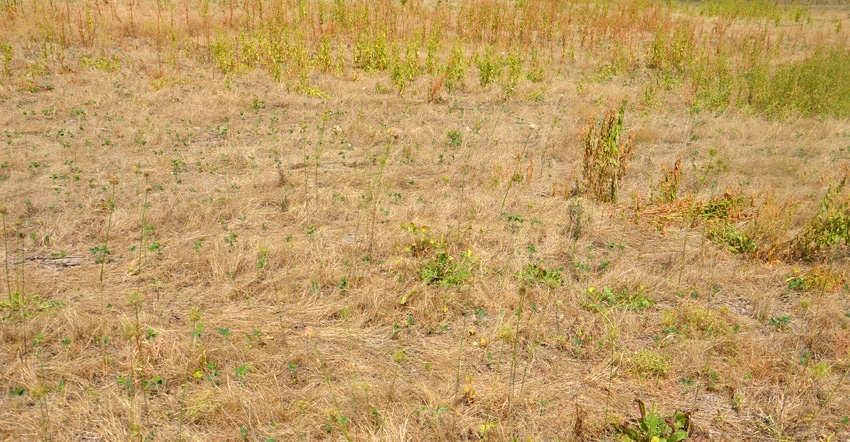
Before you criticize the burndown performance in this field, here is some information you should know. It’s below-average land, mostly silty-loam soil without good drainage. The field was custom-farmed for years. Despite all that, these no-till soybeans, just emerging here after being planted around June 1, averaged 53 bushels per acre in 2020. A postemergence spray was applied, and weeds weren’t a problem at harvest.
“The first thing to do before you apply a burndown ahead of no-till is to identify which weeds are in the field,” says Bill Johnson, Purdue University Extension weed control specialist. “The escapes here include two tough weeds, ironweed and wild garlic.
“You won’t get those if you’re just applying glyphosate as the burndown. Adding something like Sharpen wouldn’t help that much because it isn’t great on those weeds either.”
So, what could have been sprayed to deliver more effective results? “2,4-D or dicamba might have been a better choice,” Johnson says. “If there are dandelions in there too, 2,4-D would work on them. To get the wild garlic, you would probably need to add something like Harmony.”
Weather conditions when the application was made and the rate applied also would make a difference, he says. If it’s cool or you shave rates and what you’re applying is marginal at best on a weed species, you’re not going to kill it, he says.
Whether you could spray dicamba or 2,4-D and plant immediately would depend on whether the soybeans have tolerance to the herbicide, Johnson adds. Consult the label for possible waiting times before planting. There would be no wait for planting Xtend or XtendFlex soybeans following dicamba, or for planting Enlist 3 soybeans after spraying 2,4-D.
About the Author(s)
You May Also Like




